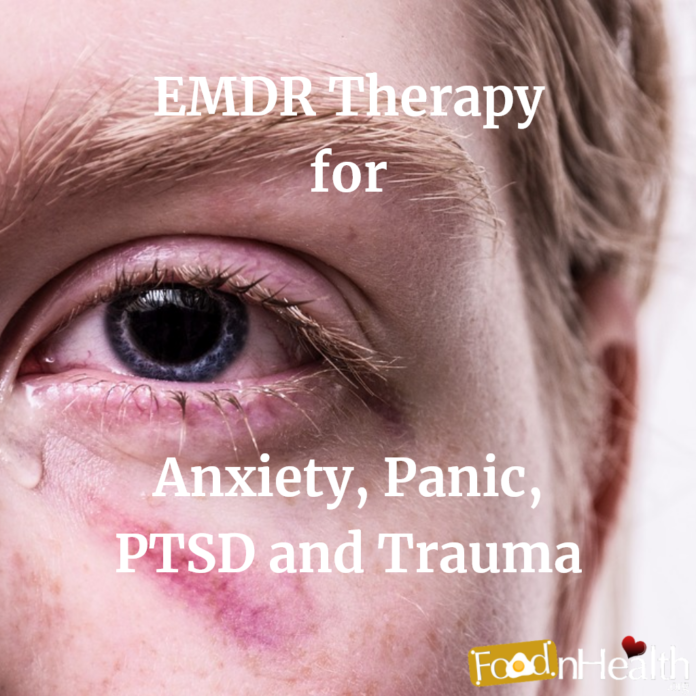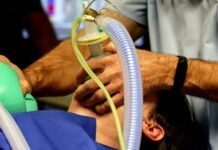
Visits to a psychologist nowadays and unfortunately common problem like anxiety, panic attacks, trauma, and PTSD, usually involves anti-depressants, sedatives, and all that conventional treatment. Psychologist and therapist Francis Shapiro had a different vision and developed a therapy with a much different approach, and named it EMDR – Eye Movement Desensitization and Reprocessing, and used it as a means of treatment for anxiety, panic, PTSD or trauma.
The definition of EMDR according to the EMDR Research Foundation is “EMDR is an integrative psychotherapy approach that has been extensively researched and proven effective for the treatment of trauma. EMDR therapy includes a set of standardized protocols that incorporate elements from many different therapy approaches. To date, EMDR has helped millions of people of all ages relieve many types of psychological stress”.
What exactly is EMDR?
Eye Movement Desensitization and Reprocessing therapy is a rather non-conventional way of treatment by interactive psychotherapy used in order to relieve psychological stress, and so far the therapy has been proven as an effective treatment for trauma and post-traumatic stress disorder (PTSD).
The therapy consists of different phases, in which the therapist reconnects the patient to images, memories, emotions and body sensations with the trauma, and allows the patient to self-heal him/herself. The point is to relieve the trauma in a controlled environment, directed by your therapist by your eye movement, facing your trauma from a safe distance, while your attention is diverted by the eye movement and different sensations. This is a much safer mode in recalling your traumatic experience and allows you to be exposed to traumatic memories without strong psychological feedback.
The whole idea of EMDR is to give space to the brain to heal itself because Dr. Shapiro believed that trauma and stress overwhelm the brain’s ability to heal, so in eight phases the therapist releases the brain from overwhelmed stress and allows it to heal itself.
How does EMDR help the patient?
For a successful treatment, you will need multiple sessions with your therapist, because EMDR consists of eight different phases, and usually it takes no less than 12 separate sessions or no less than 12 hours of therapy.
Phase 1 – The first phase is patients’ history review, and determining if the patient is suitable for treatment, and also identifying your trauma and potential traumatic memories. It is most likely that in this phase the therapist will be more focused on your childhood!
Phase 2 – this is the preparation phase and learning different techniques on how to manage stress, whether emotional or psychological. Stress management techniques include deep breathing and mindfulness.
Phase 3 – during this phase the therapist will identify specific memories and determine associated material components with that particulate memory.
Phase 4-7 – This is the treatment phase, where the therapist uses EMDR techniques to treat specifically targeted memories, where you will be asked to focus on memories involving your trauma through a negative though, object or image in the past. You will be guided to do specific eye movements, combined with taps or other motion, depending on the subject.
After the eye and motion simulation, your therapist will ask you to clear your mind and notice what you are feeling at the moment. This phase is crucial in identifying the targeted thoughts, and you will either go back to those thoughts or move to the others.
If the stress is overwhelming, the therapist will bring you back to the present moment, and after a while, bring you back to the traumatic moments. After a few sessions, the traumatic memory will fade and cause you no more trouble.
Phase 8 – this is the evaluation phase, where you and your therapist will go over the achieved goals, and look at the progress you have made. The goal is to learn how to use the techniques to deal with other stressful situations in the future too!
The benefits of EMDR therapy
Most of the patients that have benefited EMDR therapy are suffering from traumatic memories and patients with PTSD and is highly recommended to people who have trouble expressing their feeling and past experiences.
However, EMDR is also being used in treating other conditions, although there is not sufficient research to prove the benefits. Among the conditions are:
– Anxiety
– Depression
– Eating disorders
Depending on the condition, the therapist will use a different approach and might use a combination of techniques through multiple sessions.
According to the EMDR Research Foundation there are more than 30 gold standard studies proving the effectiveness of EMDR therapy for issues derived from rape and sexual abuse, childhood trauma, different accidents and most of all, combat trauma and helping patients with PTSD. This sort of therapy has been endorsed by the American Psychiatric Association and the International Society for Traumatic Stress Studies and has been used by the United States Department of Veterans Affairs, the Department of Defense and overseas organizations, including the United Kingdom Department of Health and the Israeli National Council for Mental Health.
How effective is EMDR therapy?
There are a lot of studies supporting EMDR therapy, in which one of them shows that 84-90% of single trauma victims no longer have PDST only after three therapies of 90 minutes. Another study has shown that 77% of combat veterans also show no more sings of PTSD after full 12 sessions, improving the signs of hallucinations, delusions and depression symptoms.
A study published in the International Journal of Stress Management in 2014 compared EMDR therapy over standard care, and showed that EMDR has been significantly more effective, especially in long term, because the patients felt the results over a much more longer period of time.
There are also studies that have been researching the treatment of PTSD symptoms such as hallucinations and delusions, and the use of EMDR techniques worldwide over patients with psychosis.
Any side effects?
EMDR is considered as a safe treatment, and causes much less adverse reaction than conventional medications as anti-depressants or sedatives, and lasts long after the therapy has ended.
Some side effects have been identified, all minor and insignificant:
– Lightheadedness
– Physical sensation during treatment
– Vivid dreams
– Surfacing of suppressed traumatic memories.
All the symptoms fade only after few therapies if you work through them with your therapist.
References:
- https://www.psycom.net/emdr-therapy-anxiety-panic-ptsd-trauma/
- https://www.verywellmind.com/emdr-for-panic-disorder-2584292
- https://www.healthline.com/health/emdr-therapy
- https://www.bridgestorecovery.com/blog/emdr-for-anxiety-treatment-what-is-it-and-why-does-it-work/
- https://www.medicalnewstoday.com/articles/325717.php
- http://www.aetna.com/cpb/medical/data/500_599/0583.html
- https://thepsychologist.bps.org.uk/volume-27/edition-7/emdr-more-just-therapy-ptsd
- https://www.healthyplace.com/ptsd-and-stress-disorders/ptsd/emdr-therapy-for-ptsd-and-trauma-victims
- https://www.frontiersin.org/articles/10.3389/fpsyg.2018.00923/full
- https://psycnet.apa.org/record/2004-17243-001

























